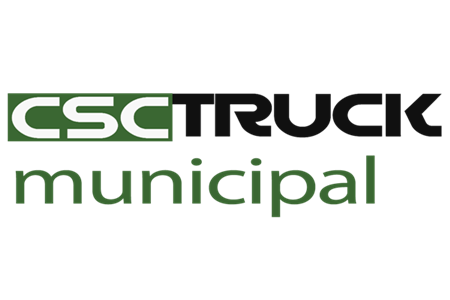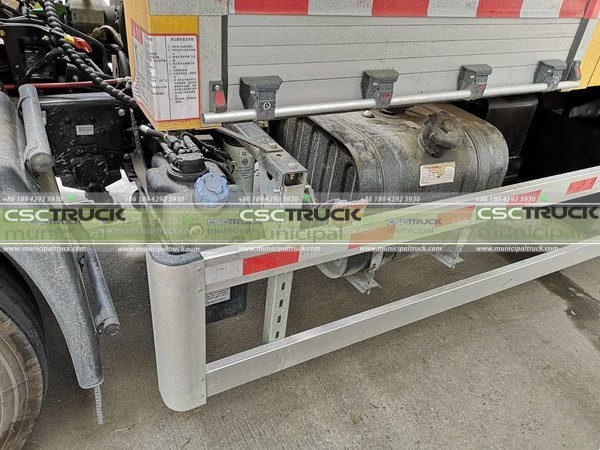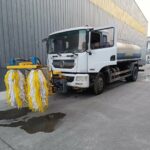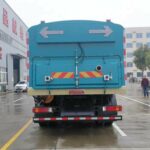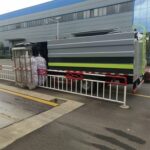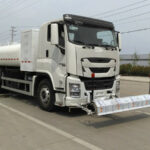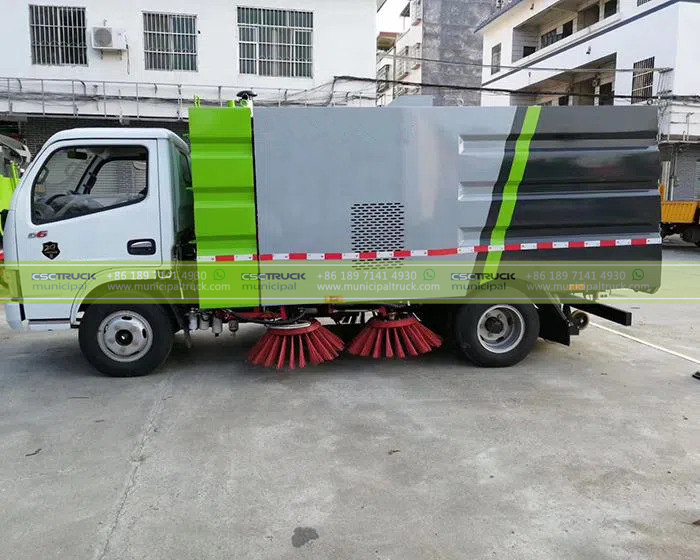Beneath the rumble of every effective street sweeper truck lies a critical, often overlooked component: its brushes. Far more than simple rotating bristles, these engineered systems are the frontline warriors in the perpetual battle against urban grime, debris, and pollution. They transform powerful machinery into precise cleaning instruments, scouring pavements and roadways to maintain public health, safety, and aesthetic appeal. Understanding their design, function, and evolution reveals the sophisticated engineering dedicated to keeping our cities presentable and environmentally sound.
Anatomy of a Cleaning Powerhouse – Brush Types and Core Functions
Street sweeper brushes are highly specialized tools, meticulously designed for distinct tasks within the cleaning process. Primary cylindrical brushes, typically mounted laterally, bear the brunt of the workload. These robust assemblies aggressively dislodge packed debris, litter, sand, and even small stones from the pavement surface, directing material towards the center of the truck’s path. Their stiff, durable bristles can tackle uneven surfaces and cracks effectively. Complementing these are the precision gutter brooms, angled brushes positioned near the curb. Their pivotal role is to capture debris swept towards the edge of the road by the main broom and the natural flow of traffic, specifically targeting the gutters where sediment, leaves, and litter accumulate, preventing storm drain blockages. Finally, the often-underestimated recirculating dust control brush works behind the main broom, gently agitating finer particles to ensure they are captured by the powerful suction system rather than becoming airborne dust clouds. Each brush type operates in concert, creating a systematic cleaning cascade that maximizes debris capture efficiency across diverse urban terrains.
Material Science Meets Municipal Duty – Innovation in Bristle Technology
The effectiveness and longevity of sweeper brushes hinge entirely on the advanced materials composing their bristles. Historically, steel wire bristles dominated, prized for their aggressive cleaning and durability on rough surfaces. However, concerns about sparking near fuel spills, damaging sensitive surfaces like decorative pavers, and accelerated wear on the sweeper’s own components drove innovation. Modern brushes overwhelmingly utilize sophisticated synthetic filaments. High-strength polypropylene filaments offer excellent abrasion resistance, flexibility, and resistance to water, oils, and common road chemicals, making them ideal for general street cleaning. For more demanding environments or finer dust control, engineered nylon compounds are employed, providing superior tensile strength, heat resistance (crucial for friction-generated heat), and enhanced durability against abrasive materials like sand and grit. The strategic selection of filament material, diameter, length, density, and mounting pattern allows manufacturers to tailor brush performance precisely to specific municipal cleaning challenges, balancing cleaning aggression with surface protection and brush life.
The Dynamics of Debris Displacement – Physics and Precision Engineering
The seemingly simple rotation of a sweeper brush masks complex physics and precise engineering optimization. Brush effectiveness is governed by critical parameters: rotational speed, down pressure, and angular orientation. Too little pressure or speed leaves debris behind; excessive force wastes energy, accelerates wear, damages surfaces, and creates unnecessary dust. Modern sweepers often feature hydraulically adjustable down pressure systems that allow operators to adapt to varying conditions – from loose leaves on a smooth boulevard to compacted mud on a construction access road. Similarly, optimized rotational speeds ensure debris is effectively dislodged and propelled into the collection path without being flung indiscriminately. The angle of the gutter broom relative to the curb is meticulously calculated to maximize debris capture while minimizing unnecessary friction or “plowing” that strains the equipment. Advanced sweeper designs incorporate sophisticated control systems and sensor feedback to dynamically adjust these parameters for peak cleaning efficiency and minimal operational cost.
Beyond Aesthetics – Environmental and Infrastructure Impact
The diligent work of sweeper brushes extends far beyond merely making streets look tidy. Their primary environmental contribution lies in mitigating non-point source pollution. By systematically removing sediment, hydrocarbons (oil, grease), heavy metals (from tire wear), litter, and organic matter before rainfall, brushes play a vital role in preventing these contaminants from washing untreated into storm drains and, ultimately, rivers, lakes, and oceans. This protects aquatic ecosystems and reduces the burden on water treatment facilities. Furthermore, regular removal of abrasive sand and grit drastically reduces roadway wear and tear, extending pavement lifespan and lowering costly long-term maintenance and resurfacing budgets for municipalities. Effective sweeping also enhances road safety by improving tire traction, especially during wet conditions, and minimizing hazards posed by loose debris to cyclists and motorcyclists. The humble sweeper brush is thus a critical component in sustainable urban infrastructure management and environmental stewardship.
Evolving for Future Cities – Durability, Automation, and Specialization
The quest for cleaner, more efficient cities continues to drive innovation in sweeper brush technology. Research persists into even more wear-resistant filament materials and brush core designs, aiming for significantly extended service life to reduce operational downtime, maintenance costs, and the environmental footprint associated with frequent brush replacement. Concurrently, the integration of automation and machine learning promises a future where sweeper trucks can autonomously optimize brush settings (speed, pressure) and navigation in real-time based on detected debris levels and surface conditions, maximizing efficiency without constant operator intervention. Specialized brush configurations remain crucial for unique environments; for instance, airport sweeper truck brushes undergo rigorous certification and may utilize specific bristle types to prevent Foreign Object Debris (FOD) hazards, while heavy-duty road sweeper truck brushes tackling construction zones demand unparalleled resilience against massive debris loads. As urban challenges evolve, so too will the sophisticated brush systems that form the essential, sweeping heart of clean city management.
